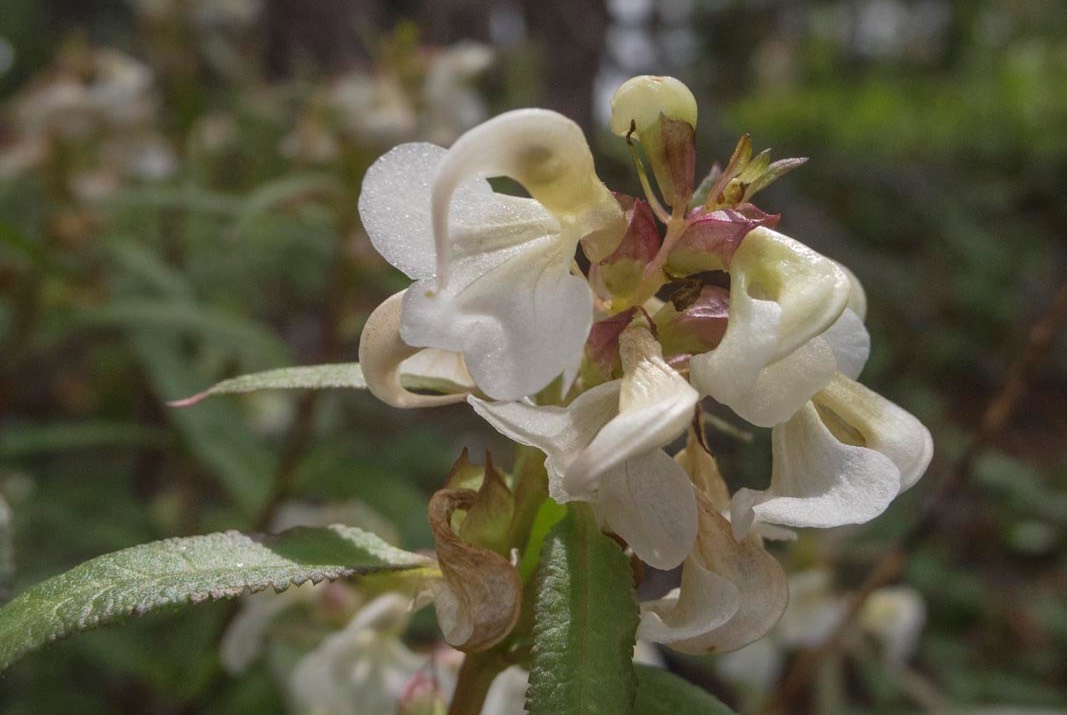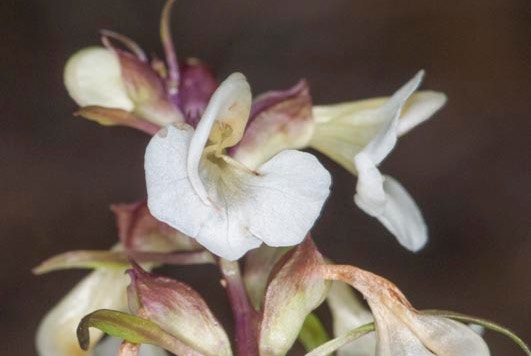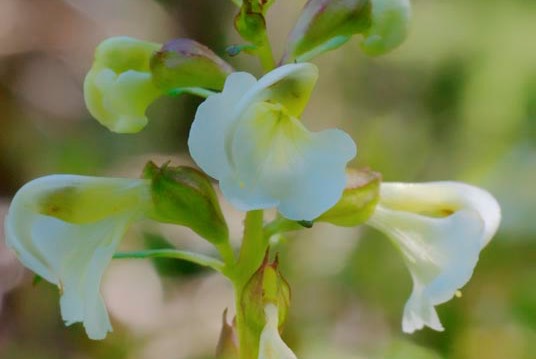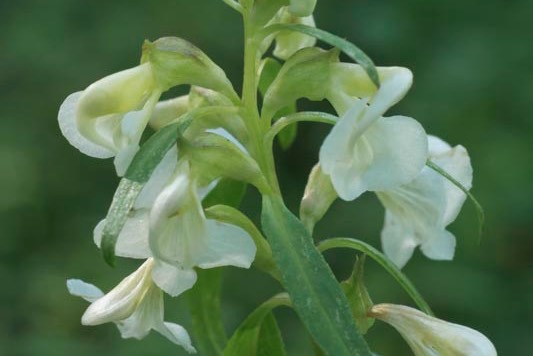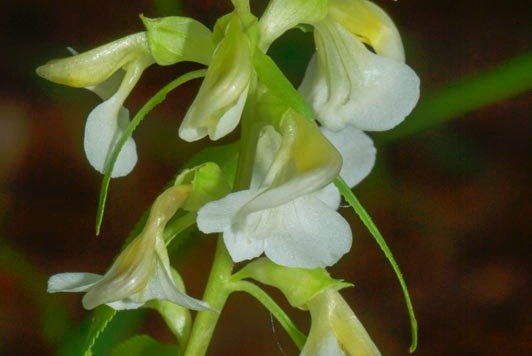(Parrot’s Beak)
| Scientific Name | Pedicularis racemosa ssp. alba | USDA PLANTS Symbol | PERAA |
| Common Name | Parrot's Beak | ITIS Taxonomic Serial No. | 524421 |
| Family | Orobanchaceae (Broomrape), formerly Scrophulariaceae | SEINet References |
Click Here |
| Description |
Life zones and habitat: Montane and subalpine (7200 to 13000 ft.); moist areas in conifer forests and meadows. Plant: Erect perennial of usually several, clustered stems up to 6 to 20 inches tall, unbranched. Leaves: Alternate, lanceolate to linear-oblong 1-1/2 to 3-1/4 inches long, often reddish with small teeth along edges. Inflorescence: A loose raceme of pale yellow or creamy white blossoms; lower flowers sometimes arising from the leaf axils; flowers two-lipped, hooded upper lip twisted downward and the lower-lip 3-lobed; calyx deeply cleft below into 2 segments, each with a pointed tip. Bloom Period: June to August. References: "Flora of Colorado" by Jennifer Ackerfield, "Guide to Colorado Wildflowers" by G.K. Guennel, E-Flora BC and Burke Museum of Natural History. |
BONAP Distribution Map Map Color Key |
Colorado Status: Native |
© Tom Lebsack 2025
Banner photo: Castilleja rhexifolia and a brewing storm over the San Juan Mountains
I try to provide accurate, up-to-date, and relevant information, but cannot guarantee the completeness or accuracy of any information presented on this website. I use authoritative references to insure high standards of accuracy and review and update the information frequently.
